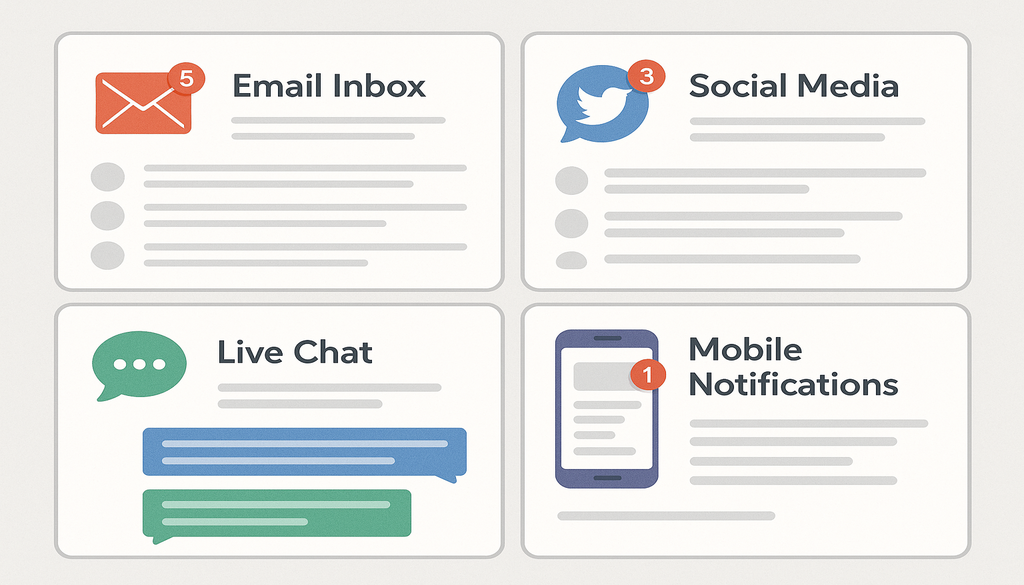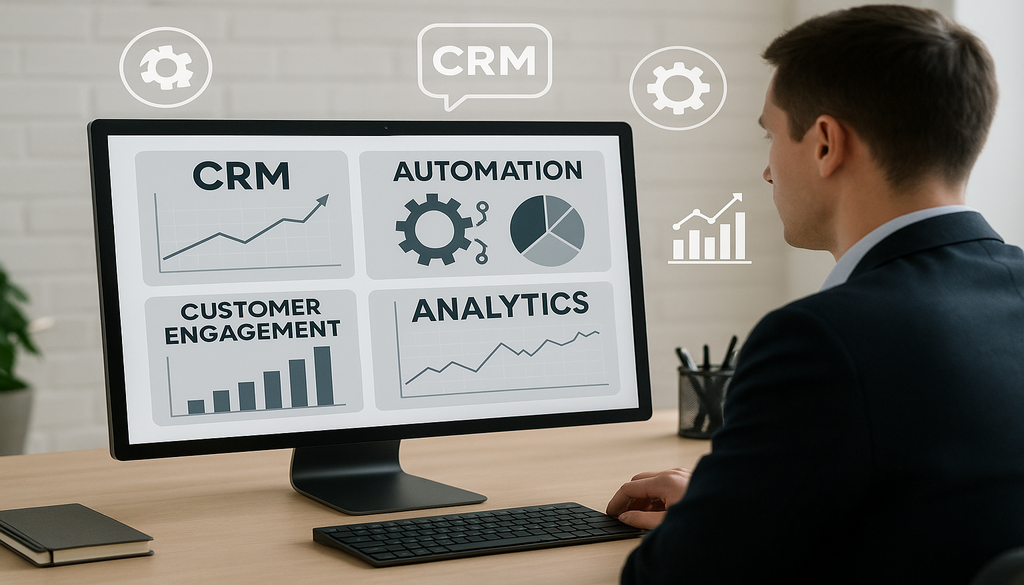Enhancing E-Commerce Communication to Boost Sales and Increase Customer Loyalty
In the fast-paced world of e-commerce, effective communication is a cornerstone for success. As businesses strive to differentiate themselves in a crowded marketplace, the ability to engage customers through meaningful interactions becomes paramount. This blog post delves into the strategic approaches and best practices that e-commerce professionals can employ to refine their communication processes, ultimately leading to increased sales and enhanced customer loyalty. By understanding the nuances of e-commerce communication, businesses can create a more engaging and satisfying customer experience.
Understanding the Role of Communication in E-Commerce
E-commerce communication encompasses all interactions between a business and its customers, from initial contact to post-purchase follow-up. This includes everything from marketing emails and social media interactions to customer service inquiries and feedback mechanisms. Effective communication in e-commerce is crucial as it directly impacts customer satisfaction and business growth. When customers feel heard and valued, they are more likely to return, make repeat purchases, and recommend the business to others. Conversely, poor communication can lead to dissatisfaction, negative reviews, and lost sales opportunities.
The impact of communication on customer satisfaction is profound. A study by Salesforce found that 84% of customers consider the experience a company provides to be as important as its products and services. This highlights the need for businesses to prioritize communication as a key component of their customer experience strategy. By fostering open, honest, and timely communication, e-commerce businesses can build trust and loyalty among their customer base, driving long-term success.
Key Components of an Effective E-Commerce Communication Strategy
An effective e-commerce communication strategy is built on several key components that work together to enhance customer interactions. Personalization is one such component, allowing businesses to tailor their messages to individual customer preferences and behaviors. Personalized communication can significantly increase engagement and conversion rates, as customers are more likely to respond to messages that resonate with their specific needs and interests.
Timeliness and responsiveness are also critical. In today’s digital age, customers expect quick responses to their inquiries and concerns. Businesses that can provide timely communication are more likely to satisfy their customers and prevent potential issues from escalating. According to HubSpot, 90% of customers rate an “immediate” response as important or very important when they have a customer service question.
Transparency and clarity in messaging are equally important. Customers appreciate clear and honest communication, especially when it comes to product information, pricing, and policies. By being transparent, businesses can set realistic expectations and avoid misunderstandings that could lead to dissatisfaction.
Best Practices for E-Commerce Customer Communication
To maximize the effectiveness of their communication efforts, e-commerce businesses should adopt several best practices. One such practice is utilizing multiple channels for engagement. By reaching customers through a variety of platforms—such as email, social media, live chat, and mobile notifications—businesses can ensure they are meeting customers where they are most active and comfortable.
Another best practice is integrating customer feedback into communication loops. By actively seeking and responding to customer feedback, businesses can demonstrate that they value their customers’ opinions and are committed to continuous improvement. This not only enhances customer satisfaction but also provides valuable insights that can inform future communication strategies.
Real-world examples of successful e-commerce communication can provide valuable lessons. For instance, Zappos is renowned for its exceptional customer service, which is largely driven by its commitment to open and honest communication. By empowering its customer service representatives to go above and beyond in their interactions with customers, Zappos has built a loyal customer base and a strong brand reputation.
Technological Tools to Enhance E-Commerce Communication
Incorporating the right technological tools can significantly enhance e-commerce communication. Customer Relationship Management (CRM) systems are invaluable for managing customer interactions and data. By centralizing customer information, CRM systems enable businesses to deliver personalized and consistent communication across all touchpoints.
Automation tools can also improve communication efficiency by streamlining routine interactions and ensuring timely responses. For example, automated email campaigns can nurture leads and keep customers informed about new products and promotions without requiring constant manual effort.
Analytical tools are essential for measuring the effectiveness of communication efforts. By tracking metrics such as open rates, click-through rates, and customer satisfaction scores, businesses can gain insights into what is working and where improvements are needed. This data-driven approach allows for continuous optimization of communication strategies.
How to Improve E-Commerce Communication for Increased Sales
Effective communication can be a powerful driver of sales in e-commerce. One strategy is to convert communication into sales by using targeted messaging to guide customers through the purchasing process. For example, personalized product recommendations based on browsing history can encourage customers to make additional purchases.
Upselling and cross-selling are also effective communication strategies. By suggesting complementary products or upgrades during the purchase process, businesses can increase the average order value and enhance the customer experience.
Building trust through consistent and honest communication is crucial for converting one-time buyers into loyal customers. By maintaining a transparent and reliable communication approach, businesses can foster long-term relationships with their customers, leading to repeat sales and increased lifetime value.
Cultivating Customer Loyalty through Strategic Communication
Cultivating customer loyalty requires a strategic approach to communication that goes beyond the initial sale. Follow-up and ongoing engagement are essential for keeping customers connected to the brand. Regular check-ins, personalized offers, and exclusive content can help maintain customer interest and encourage repeat purchases.
Loyalty programs are another effective tool for fostering customer loyalty. By offering rewards and incentives for repeat purchases, businesses can encourage customers to continue choosing their brand over competitors. Effective communication is key to promoting these programs and ensuring customers are aware of the benefits they offer.
The long-term benefits of a loyal customer base are significant. Loyal customers not only generate repeat business but also become brand advocates, spreading positive word-of-mouth and attracting new customers. By prioritizing strategic communication, e-commerce businesses can build a loyal customer base that drives sustained growth and success.
Conclusion
In conclusion, effective e-commerce communication is essential for boosting sales and fostering customer loyalty. By implementing strategies that prioritize personalization, timeliness, transparency, and the use of technological tools, businesses can create meaningful connections with their customers. These efforts not only enhance the customer experience but also drive long-term success by building a loyal customer base. As the e-commerce landscape continues to evolve, businesses that prioritize communication will be well-positioned to thrive in an increasingly competitive market.
Frequently Asked Questions (FAQ)
Q1: What are the most effective communication channels for e-commerce businesses?
A1: E-commerce businesses find the most success with a mix of email, social media, live chat, and personalized mobile notifications, depending on their target audience. Each channel offers unique benefits; for instance, email is great for detailed information, while social media allows for real-time interaction.
Q2: How can small e-commerce businesses improve their communication without a large budget?
A2: Small e-commerce businesses can leverage cost-effective tools like email marketing platforms and social media to maintain active and personalized communication with their customers. Additionally, utilizing free or low-cost CRM systems can help manage customer interactions efficiently.
Q3: What is the impact of poor communication on e-commerce sales?
A3: Poor communication can lead to misunderstandings, decreased customer satisfaction, and ultimately, a drop in sales and customer retention rates. Customers who experience negative interactions are less likely to return and may share their experiences with others, further impacting the business.
Q4: How often should e-commerce businesses communicate with their customers?
A4: The frequency should be balanced to avoid spamming; it depends on customer preferences, the nature of the transaction, and the stage of the customer journey. Regular updates and promotions are beneficial, but businesses should also respect customer preferences for communication frequency.
Q5: Can automation improve communication in e-commerce?
A5: Yes, automation can streamline routine communications, ensure timely responses, and personalize interactions based on customer data, enhancing overall communication efficiency. Automation tools can handle repetitive tasks, allowing businesses to focus on more strategic interactions.
{
“@context”: “https://schema.org”,
“@type”: “FAQPage”,
“mainEntity”: [
{
“@type”: “Question”,
“name”: “What are the most effective communication channels for e-commerce businesses?”,
“acceptedAnswer”: {
“@type”: “Answer”,
“text”: “E-commerce businesses find the most success with a mix of email, social media, live chat, and personalized mobile notifications, depending on their target audience. Each channel offers unique benefits; for instance, email is great for detailed information, while social media allows for real-time interaction.”
}
},
{
“@type”: “Question”,
“name”: “How can small e-commerce businesses improve their communication without a large budget?”,
“acceptedAnswer”: {
“@type”: “Answer”,
“text”: “Small e-commerce businesses can leverage cost-effective tools like email marketing platforms and social media to maintain active and personalized communication with their customers. Additionally, utilizing free or low-cost CRM systems can help manage customer interactions efficiently.”
}
},
{
“@type”: “Question”,
“name”: “What is the impact of poor communication on e-commerce sales?”,
“acceptedAnswer”: {
“@type”: “Answer”,
“text”: “Poor communication can lead to misunderstandings, decreased customer satisfaction, and ultimately, a drop in sales and customer retention rates. Customers who experience negative interactions are less likely to return and may share their experiences with others, further impacting the business.”
}
},
{
“@type”: “Question”,
“name”: “How often should e-commerce businesses communicate with their customers?”,
“acceptedAnswer”: {
“@type”: “Answer”,
“text”: “The frequency should be balanced to avoid spamming; it depends on customer preferences, the nature of the transaction, and the stage of the customer journey. Regular updates and promotions are beneficial, but businesses should also respect customer preferences for communication frequency.”
}
},
{
“@type”: “Question”,
“name”: “Can automation improve communication in e-commerce?”,
“acceptedAnswer”: {
“@type”: “Answer”,
“text”: “Yes, automation can streamline routine communications, ensure timely responses, and personalize interactions based on customer data, enhancing overall communication efficiency. Automation tools can handle repetitive tasks, allowing businesses to focus on more strategic interactions.”
}
}
]
}










